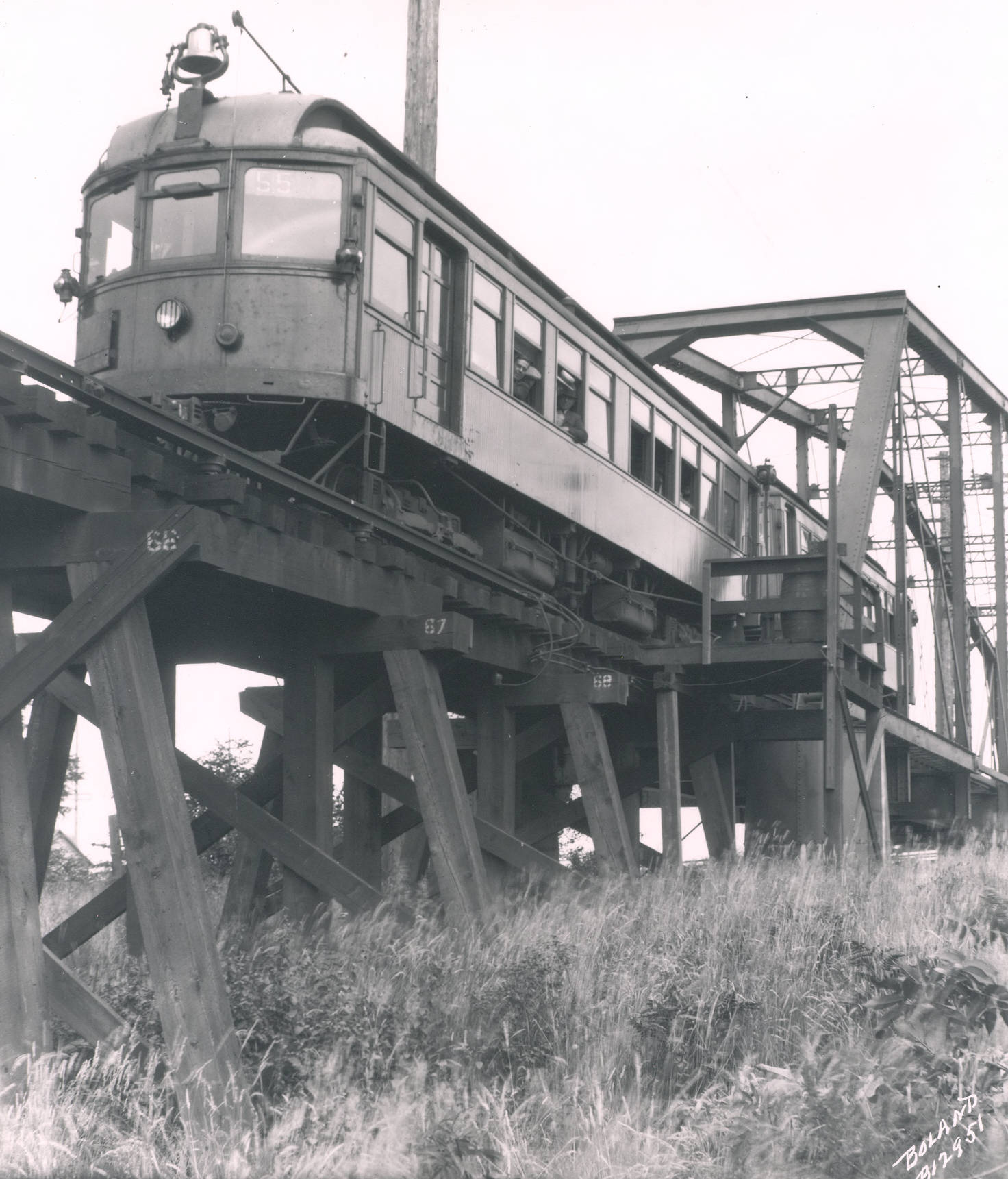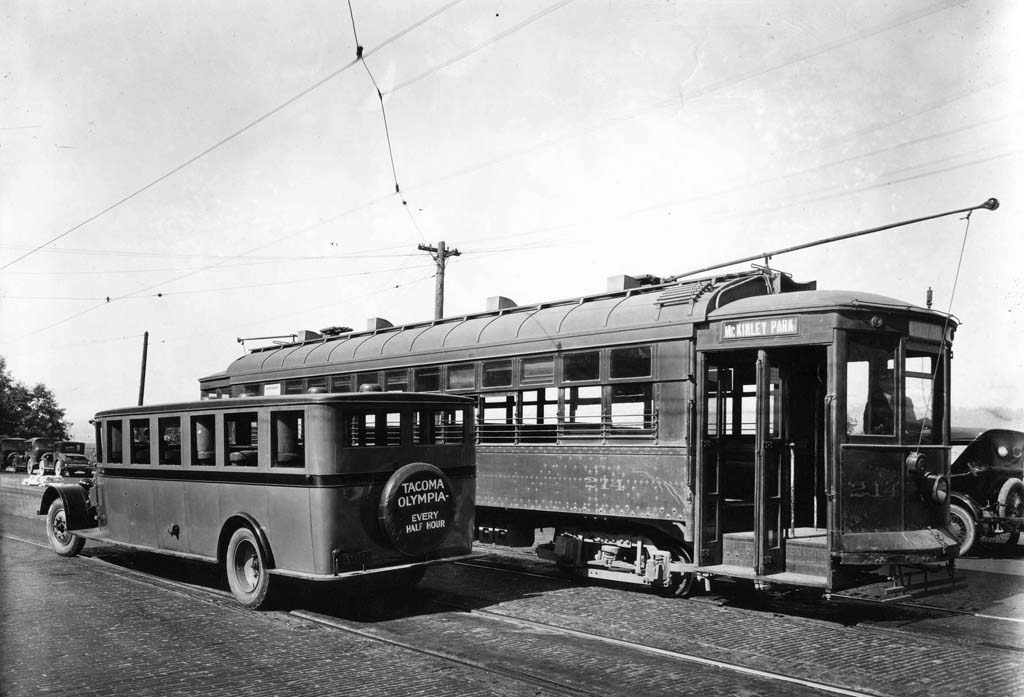-----
 |
| Puget Sound Train 55 bound for Seattle, 1925 (SouthSound Talk) |
 |
| North Coast's Seattle Bus Terminal, 1928 (Washington State Digital Archives) |
1928 was the death knell of the PSE. The Auburn Globe Republican was the first to report in early January, noting "ELECTRIC LINE HAS TROUBLES". "Troubles" was an understatement, as PSE defaulted on company bonds worth $2,427,000 that were due by that February. (Wing, 111) This wasn't the first time PSE had defaulted, as Puget Sound Light & Power (PSL&P) refused to grant more funds to its interurban division. PSE was not allowed to sell any rolling stock or properties following an injunction on behalf of the Old Colony Trust of Boston in federal court.
 |
| Artwork of the Puget Sound Electric in the 1910s (Northwest Railway Museum) |
 |
| An October 1928-dated schedule for interurbans and stages, two months before termination (HistoryLink.org) |
Some time before the last train, NCL put out a new schedule showing which buses would be replacing the Puget Sound Electric in Auburn, thought to be the center of a new transit hub. The interurban was not going to be part of the hub, as the last train would leave December 30th from Seattle, bount for Tacoma. Motorman Roy Kelly was granted the job of hatchet man, delivering the last load of passengers and then going up the line to collect any and all freight cars left. In the wee small hours of December 31, 1929, all power for the 26-year-old system went off for good.
The story doesn't stop there, surprisingly, as the PSE's physical assets (cars and track) went to a public auction. The highest bid for ownership came from PSE's parent company, PSL&P , but three other companies put in large bids to just get the cars, whether for secondhand operation or for scrap. The entire value was worth $389,541, or about $5.8 million in 2020 dollars, which PSL&P did pony up until a landslide bid of over $400,000 was put up by representatives of a marine wrecking company and a brass and metal company. Everyone had no doubts the cars and systems would go to scrap.
The bids were eventually thrown out in Tacoma's federal court by 1930, which gave enough time for people to begin grumbling about the shutdown. The Interurban Confederated Community Club (ICCC) was formed of 100 or so citizens looking to bring back the interurban, having been dissatisfied with the new buses. Scott Z. Henderson was grilled by the ICCC and claimed that while the PSE might have been making a profit, the cost of upkeep of the stock and logistics made it wiser to end operations with no mention of the new highways. PSP&L were also quoted, by Henderson, as wanting to "get out of the transportation business." (Wing, 116)
By April, a new auction had begun and PSP&L, to almost nobody's surprise, won ownership of property and right of way. The cars were sold to the Pacific Equipment Company of Portland, Oregon, where they were lated scrapped. Henderson continued to try and dissuade residents from demanding services resumed, while those with their heads in sand believed that service would eventually continue, just not as often. Tacoma would continue to have a local streetcar service until 1938, but the glory days of a direct interurban up the Sound had come to an end.
 |
| A Tacoma streetcar passes by a replacement stage bus prior to end of service (Historylink.org) |
-----
Thus ends today's report on the end of the Tacoma Interurban. Next Tuesday, we start on Seattle's streetcars from its beginnings with the Puget Sound Electric all the way to the modern Sounder light rail in operation today. Until then, ride safe.


No comments:
Post a Comment